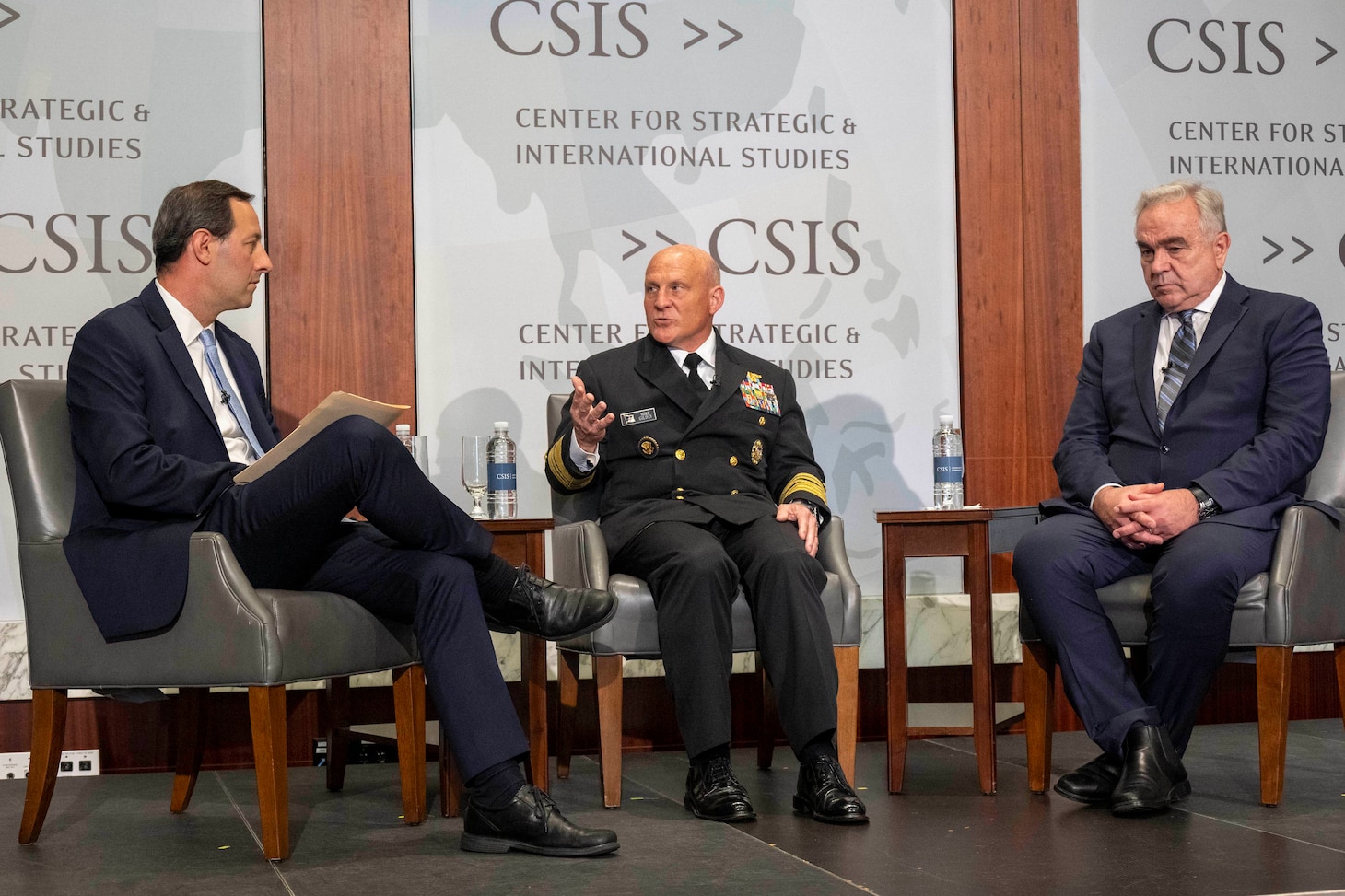Submission Statement
The United States has embarked upon a wide-ranging campaign to refresh and deepen alliances all across the Indo-Pacific. AUKUS is perhaps the most concrete of those thus far. While its signature accomplishment is the procurement of nuclear submarines for Australia(Pillar 1), the initiative also involves knowledge and technology sharing across a wide spectrum of fields, including quantum and AI(Pillar 2). This interview serves to lay down some of the goals for the AUKUS partnership and the future progress needed to realize those goals.
This seems to be a transcript of an actual interview that happened live and was presumably recorded. Unfortunately, I have been unable to find a video of the interview. If someone can find it I would be grateful!
Key Takeaways:
-Interoperability and interchangeability are watchwords for AUKUS programs. The AUKUS submarines will be shared between two nations and will have many components common to US submarines as well.
-The Admiral is still vague on where Virginia class subs that will be sold to Australia will come from. Maybe stockpiles, maybe new production. It sounds very contingent on whether the US shipyards currently building Virginias can hit their targets soon.
-AUKUS Pillar 2(tech sharing) has received interest from a range of nations, and both individuals were open to incorporating other nations based on their ability to contribute to the various fields encompassed.
-The first group of Australian submariners will graduate from the Nuclear Power School this week.
-The spy balloon incident highlighted the lack of military-military channels between the US and China.
-Pillar 2 has already had concrete achievements in AI and UAV technology but is still in a very preliminary stage.
Admiral Gilday is the son of a navy sailor and the 32nd Chief of Naval Operations. A surface warfare officer, he is a graduate of the U.S. Naval Academy and holds master’s degrees from Harvard Kennedy School and the National War College.
Dr. Kurt Campbell serves as the Deputy Assistant to the President and Coordinator for Indo-Pacific Affairs on the National Security Council. He was previously chairman and chief executive officer of The Asia Group.
AUKUS, as you can tell, is an extraordinarily ambitious program, and we’re just beginning to understand the scale of those ambitions. This means investments into our own and our allies’ systems, a real linking of Asian and European allies, an integration—to a larger degree—of our industrial capabilities. The ambition of this undertaking has grown commensurately with the scale of the challenge that we are all presented with. AUKUS was undertaken against the backdrop of a deteriorating security environment in the Indo-Pacific region, specifically, centering around the explosive growth of China’s military capabilities and the increasingly aggressive use to which those military capabilities are put. Those two trends have heightened security concerns in the region and motivated AUKUS members to begin aligning their strategies and respond to the challenges posed by Beijing.
We’re going to talk today largely about AUKUS. But there’s the Quad. There are trilateral engagements that we’ve undertaken in Northeast Asia. We’ve sought to build on closer ties with Japan, with South Korea, with the Philippines. You will have seen last week, I think, a pretty substantial diplomatic initiative to open a much closer period of strategic orientation and partnership between the United States and India.

